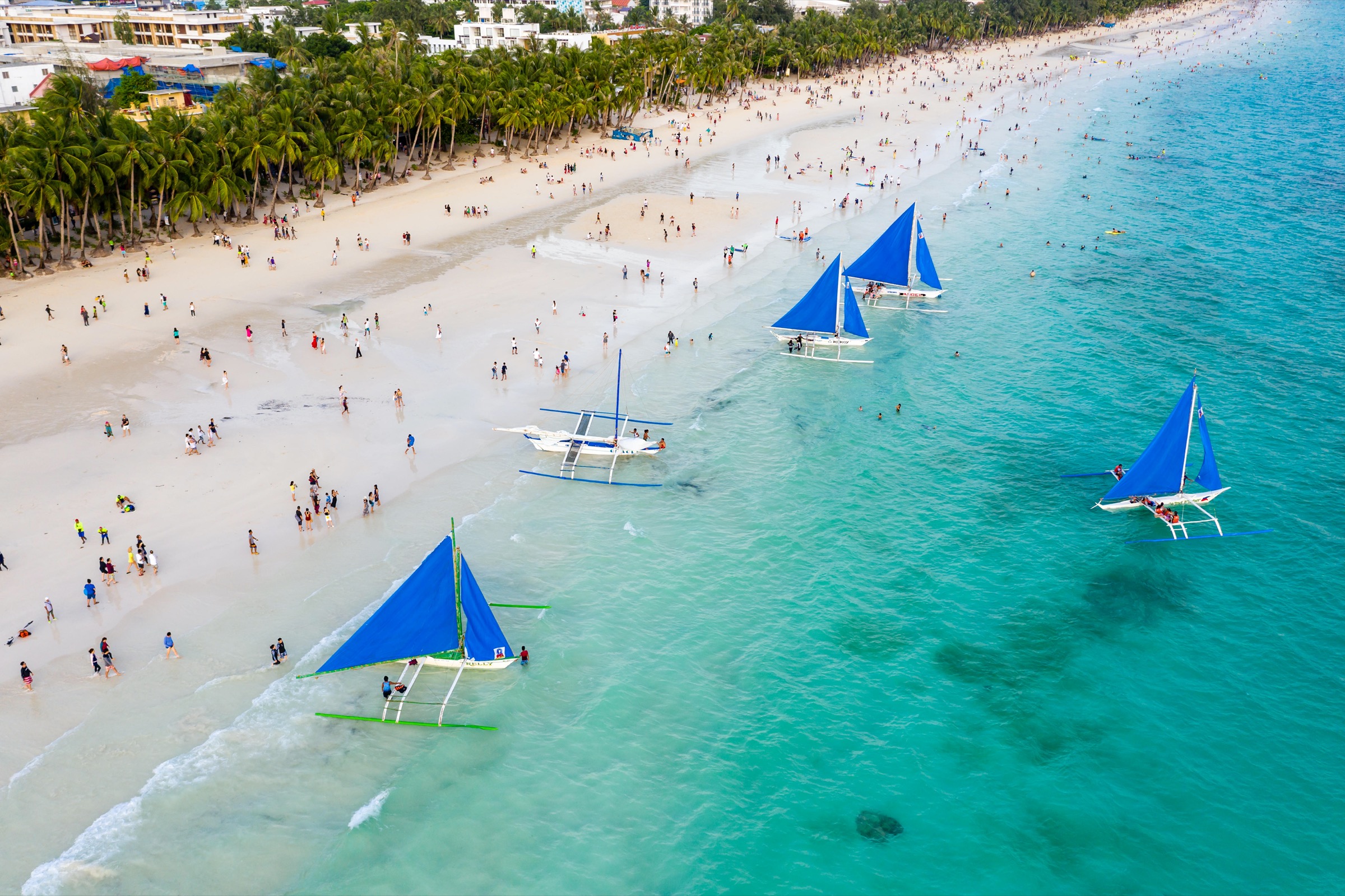It had become known as “Paradise Lost,” or a “cesspool,” as former Philippine President Rodrigo Duterte described it, after it was tainted by sewage. The once brilliant white sand and clear waters of Boracay Island were choking on the trash and traffic that comes from 2 million annual visitors. It reached a nadir in 2018, when Duterte closed down all tourism on the island for six months—an emergency Band-Aid for decades of ecological abuse.
Then the pandemic struck, and the Philippines closed its borders, halting even domestic tourism to Boracay. It took a severe toll on the local economy, but the silver lining was that this 4-sq.-mi. speck in the Visayas island chain had proper time to truly recover. As of February 2022, international visitors can finally revel in this revamped, recuperated, natural playground after what was effectively a three-year convalescence. Locals report the return of flora and fauna, like sea turtles, and hospitality has come back just as spectacularly. The luxurious Crimson Resort and Spa, originally opened in March 2018, offers 192 rooms including suites and villas, plus cascading infinity pools, and a private beach.
- Dua Lipa Manifested All of This
- Exclusive: Google Workers Revolt Over $1.2 Billion Contract With Israel
- Stop Looking for Your Forever Home
- The Sympathizer Counters 50 Years of Hollywood Vietnam War Narratives
- The Bliss of Seeing the Eclipse From Cleveland
- Hormonal Birth Control Doesn’t Deserve Its Bad Reputation
- The Best TV Shows to Watch on Peacock
- Want Weekly Recs on What to Watch, Read, and More? Sign Up for Worth Your Time
